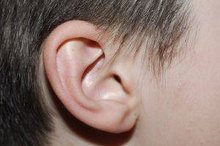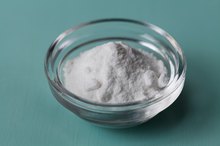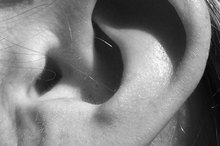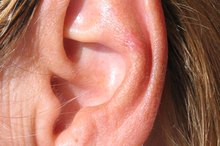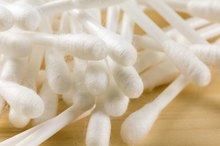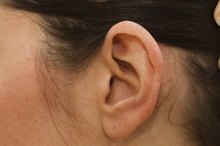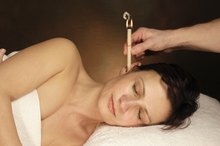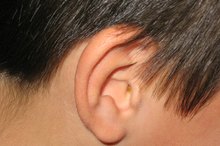What does fact checked mean?
At Healthfully, we strive to deliver objective content that is accurate and up-to-date. Our team periodically reviews articles in order to ensure content quality. The sources cited below consist of evidence from peer-reviewed journals, prominent medical organizations, academic associations, and government data.
The information contained on this site is for informational purposes only, and should not be used as a substitute for the advice of a professional health care provider. Please check with the appropriate physician regarding health questions and concerns. Although we strive to deliver accurate and up-to-date information, no guarantee to that effect is made.
How to Dissolve an Ear Wax Plug
Ear wax serves an important role, helping to keep the ear canal clean, protected and free of bacteria. Normally, ear wax slowly makes its way down the ear canal and falls or is washed out. Some people, however, have an overabundance of wax, which can harden, blocking the ear canal. This impaction by the oily wax can result in a ringing sound in the ear known as tinnitus as well as itching, temporary hearing loss, odor or an earache. Since wax only forms in the outer third of the ear canal, trying to remove the wax yourself can push it deeper into the canal. Ideally, wax should be removed by a physician or at home using ear irrigation.
If you are experiencing serious medical symptoms, seek emergency treatment immediately.
Apply drops with an eyedropper to the ear to soften the wax. Mineral oil, baby oil, hydrogen peroxide, commercial ear drops and glycerin are all recommended.
How to Clean Ear Wax With Mineral Oil
Learn More
Repeat twice a day for no longer than four or five consecutive days until the wax softens.
Fill a rubber-bulb syringe with warm water (approximately body temperature) and gently squeeze water into the ear canal as you tilt your head back and to the side so the affected ear is facing up. This straightens the ear canal.
Baking Soda & Water for Ear Wax
Learn More
Tip your head down and to the side so the affected ear is pointing toward the floor.
Repeat steps one through four until the wax is removed. If, after several attempts, the ear is still blocked, consult a physician. Never stick an object down the ear canal in an attempt to loosen the wax, as this can cause damage to the ear or eardrum. There are also several earwax removal kits on the market that may provide further relief.
Warnings
If your ear drum has a hole in it, do not attempt to remove the wax or irrigate the ear yourself, as further damage could result. See a physician instead.
Related Articles
References
- Mayo Clinic: Earwax blockage
- MedLine Plus: Wax Blockage
- Got an ear full? Here's some advice.Harvard Medical School. 2018.
- Is It Really Dangerous to Clean My Ears with Cotton Swabs?. Cedars-Sinai. 2018.
- Ear Wax. US National Library of Medicine. 2018.
- Ear Wax. Mount Sinai.
- Impacted Earwax. Cedars-Sinai.
- Schwartz SR, Magit AE, et al. Clinical Practice Guideline (Update): Earwax (Cerumen Impaction). Otolaryngol Head Neck Surg. 2017;156(1):S1-S29. doi: 10.1177/0194599816671491
- What’s Earwax?. KidsHealth from Nemours.
- American Academy of Otolaryngology—Head and Neck Surgery. Earwax
- American Speech-Language-Hearing Association. Nothing Smaller Than Your Elbow, Please
Warnings
- If your ear drum has a hole in it, do not attempt to remove the wax or irrigate the ear yourself, as further damage could result. See a physician instead.
Writer Bio
A professional writer since 2004, Abby Roberts holds a Bachelor of Arts in writing and has worked as a magazine editor, a staff writer and as a freelance writer for "Muscle and Fitness Hers" magazine. Roberts also produces a blog for female cyclists. She has experience working with cyclists in different facets of training and performance enhancement.
